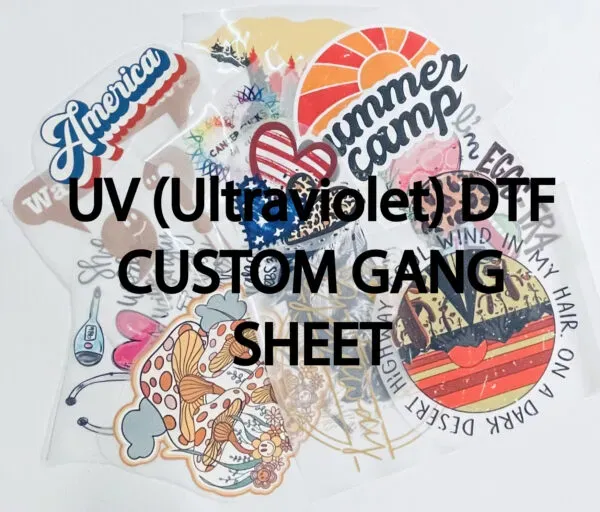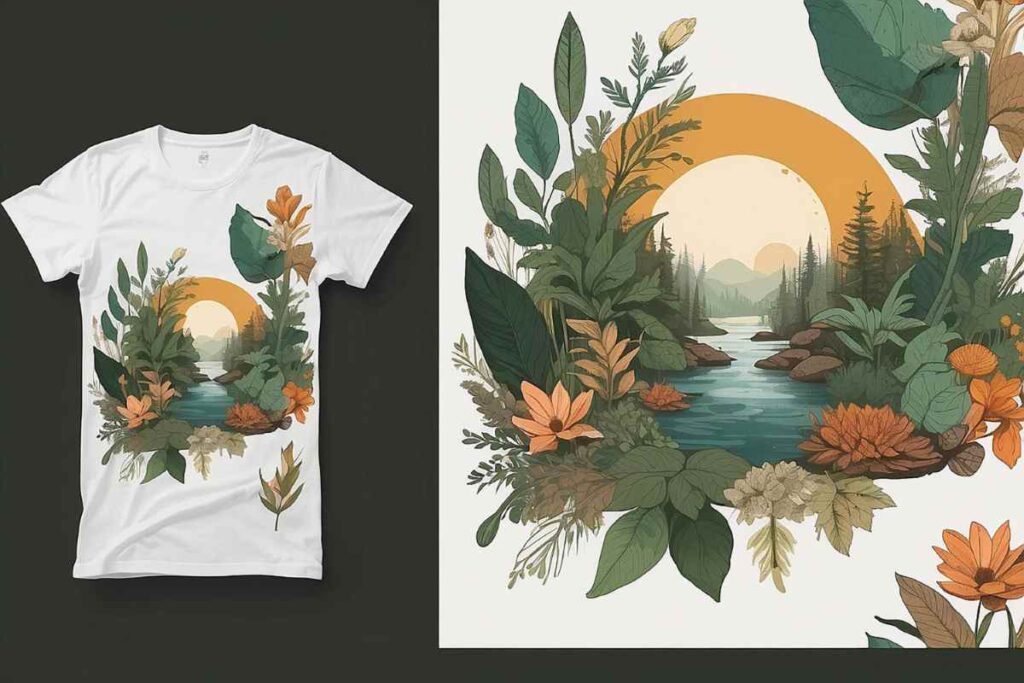In the world of modern printing, **UV DTF Gangheet** has emerged as a powerful contender against traditional printing methods. Leveraging cutting-edge ultraviolet technology, this technique allows for vibrant, detailed prints on a wide array of surfaces—from plastics to textiles. With its enhanced print quality and versatility, UV DTF Gangheet offers businesses a cost-effective printing solution without compromising on brilliance or durability. As companies aim to elevate their branding efforts, the efficiency and sustainability aspects of UV printing further cement its position as a favored choice. This introductory comparison highlights the unique advantages of UV DTF Gangheet, while inviting business owners to carefully consider their specific needs against traditional methods.
When exploring the nuances of contemporary printing solutions, UV Direct-to-Film (DTF) Gangheet represents an innovative frontier in print technology. Often juxtaposed with legacy printing techniques, such as screen and offset printing, DTF highlights the shift towards more flexible and efficient processes. The embrace of UV printing heralds opportunities for businesses to achieve superior print quality and adapt to diverse material requirements. This evolution in printing methods reflects a broader trend in the industry, where cost-effective printing solutions, enhanced speed, and creativity take precedence over traditional constraints. As companies navigate this dynamic landscape, understanding both DTF and traditional methods becomes crucial for staying competitive.
The Evolution of Printing Technologies
In recent years, the landscape of printing technologies has witnessed monumental shifts, particularly with the advent of innovative methods like UV DTF Gangheet. Traditional printing techniques have long dominated the market but are now increasingly complemented by advancements that cater to the modern needs of businesses. These evolutions not only open up new avenues for creativity and efficiency but also challenge established norms in print quality and material versatility.
UV printing, in general, has garnered a reputation for its exceptional color fidelity and durability, making it a favored choice among designers and brand managers. This progress marks a turning point where businesses can choose between established methods and innovative solutions that allow for new applications on diverse substrates. Understanding these advancements enables companies to make informed decisions based on their unique operational demands.
Print Quality: UV DTF Gangheet vs. Traditional Techniques
When it comes to print quality, UV DTF Gangheet printing stands out for its ability to produce remarkably vivid and sharp images. The immediate curing process utilizing ultraviolet light ensures that colors are encapsulated and preserved, resulting in prints that not only look outstanding but also endure wear and tear over time. This method is particularly beneficial for businesses looking to create eye-catching marketing materials or high-end products that require an elevated level of detail.
In contrast, traditional printing methods, such as screen printing and offset printing, may fall short in capturing the same level of detail, especially with intricate designs. While these methods have their merits, their capacity to deliver high-quality results often comes at the expense of versatility with materials. Therefore, companies prioritizing top-notch print quality should consider the superior capabilities of UV DTF printing for their most demanding projects.
Material Compatibility: Flexibility with UV DTF Gangheet
One of the most compelling advantages of UV DTF Gangheet printing is its unrivaled material compatibility. This technology allows for printing on a wide array of surfaces, including textiles, plastics, and even metals. Such flexibility can be a game changer for businesses looking to diversify their product offerings without needing to invest in multiple traditional printing setups. This versatility not only enhances creativity but can potentially lead to new revenue streams.
Conversely, traditional printing methods are often confined to specific types of materials. For instance, while screen printing excels with certain fabrics, it may not deliver favorable results on rigid substrates. This limitation can hinder businesses aiming for innovation in product design or packaging. By utilizing UV DTF, enterprises can explore various materials and optimize their offerings to meet customer preferences.
Cost-Effectiveness in Large Volume Orders
When it comes to bulk production, traditional printing methods often reign supreme due to their cost-effective nature. The economies of scale achieved through processes like offset printing significantly lower the per-unit cost as print runs increase. For businesses with demand for high-volume projects, the traditional options provide a proven solution that maximizes budgetary constraints while maintaining acceptable print quality.
However, businesses should also evaluate the long-term benefits of UV DTF printing, which, despite potentially higher initial costs, can lead to savings in material waste and turnaround time. This method is particularly advantageous for companies that value customized or short-run printing, often allowing for rapid production without compromising on quality. Ultimately, the choice between UV DTF and traditional printing hinges on project needs, budget considerations, and volume requirements.
Sustainability in Printing Choices
In an era where sustainability has become a critical focus for consumers and companies alike, UV printing technologies like DTF offer a more environmentally friendly printing solution. Research suggests that UV DTF printing typically emits fewer volatile organic compounds (VOCs) compared to conventional inks used in traditional methods. This eco-friendliness may resonate well with businesses aiming to align their operations with green practices, appealing more successfully to eco-conscious customers.
Traditional printing methods, while effective, can often involve processes that are less sustainable and produce more waste. Companies invested in reducing their environmental impact need to carefully consider their printing choices. Embracing UV DTF not only supports eco-friendly initiatives but may also enhance a brand’s reputation in the market, reinforcing the message that sustainability is a core company value.
Conclusion: Making the Right Printing Choice for Your Business
Deciding between UV DTF Gangheet printing and traditional methods boils down to a thorough evaluation of a business’s specific needs and goals. Companies seeking flexibility, vibrant colors, and faster turnaround times may find UV DTF to be the superior option that aligns with modern market demands. In contrast, firms focused on bulk production may still find great value in conventional printing methods that emphasize cost-effectiveness.
Ultimately, the decision should reflect the unique demands of the business while considering factors such as print quality, material compatibility, budget, and sustainability goals. By understanding the strengths and limitations of each method, companies can position themselves to achieve greater efficiency, improve customer satisfaction, and enhance their overall brand image.
Frequently Asked Questions
What is UV DTF Gangheet printing and how does it compare to traditional printing methods?
UV DTF Gangheet printing utilizes UV light technology to cure printed images on transfer film, offering vibrant print quality across various materials. Unlike traditional printing, which often relies on water or solvent-based inks, UV DTF provides faster curing times and superior durability, making it a modern choice for businesses seeking high-quality prints.
Why should I choose UV DTF Gangheet over traditional printing for my business?
Opting for UV DTF Gangheet can enhance your print quality with vivid colors and allow for a wider array of materials. Its efficiency in handling short runs makes it ideal for businesses focusing on customization and quick turnarounds, unlike traditional printing methods that excel in bulk but may lack versatility.
Is UV DTF Gangheet printing cost-effective compared to traditional printing techniques?
While UV DTF Gangheet may present higher upfront costs, it can reduce long-term expenses by minimizing material waste and expediting production. For businesses requiring flexibility and quality, it offers a cost-effective solution over time compared to traditional printing methods that may be cheaper for large runs.
What types of materials can be used with UV DTF Gangheet printing?
UV DTF Gangheet can print on a diverse range of materials including plastics, metals, and textiles, making it versatile compared to traditional printing methods which may be limited to specific substrates. This allows businesses to explore innovative products without being constrained by material compatibility.
How does the print quality of UV DTF Gangheet differ from traditional printing methods?
UV DTF Gangheet delivers superior print quality characterized by sharp imagery and vibrant colors, thanks to the UV curing process that locks in ink quickly. In contrast, traditional printing may sometimes yield less vivid colors and detail, particularly on complex or intricate designs.
What are the environmental benefits of choosing UV DTF Gangheet over traditional printing?
UV DTF Gangheet is generally more eco-friendly, emitting fewer volatile organic compounds (VOCs) compared to many traditional printing methods. This makes UV DTF a sustainable option for businesses aiming to reduce their environmental footprint while still maintaining high-quality print production.
| Aspect | UV DTF Gangheet | Traditional Printing |
|---|---|---|
| Print Quality | Sharp, vivid imagery with quick curing processes for durability. | Reliable for straightforward designs, higher resolution may depend on technique. |
| Material Compatibility | Versatile across materials including plastics and textiles. | Best for specific applications; limited to certain substrates. |
| Efficiency | Fast production with simultaneous printing and curing. | Slower for small runs; economy of scale benefits large volume orders. |
| Cost Efficiency | Higher initial investment; can lead to savings on materials and delivery. | Lower costs per unit for bulk orders, well-suited for large projects. |
| Sustainability | Lower emissions of VOCs, more eco-friendly option. | Some methods may have higher emissions; varies by technique. |
Summary
UV DTF Gangheet represents a modern and flexible approach in printing that addresses the unique demands of today’s market. As businesses seek vibrant imagery and adaptability in their print projects, UV DTF Gangheet stands out for its superior quality and sustainability. When considering the needs of your business, it’s essential to weigh these advantages against the proven reliability of traditional printing techniques, especially for larger volume orders. By evaluating the distinct strengths of UV DTF Gangheet, businesses can align their printing processes with their operational goals, leading to greater efficiency and customer satisfaction.


